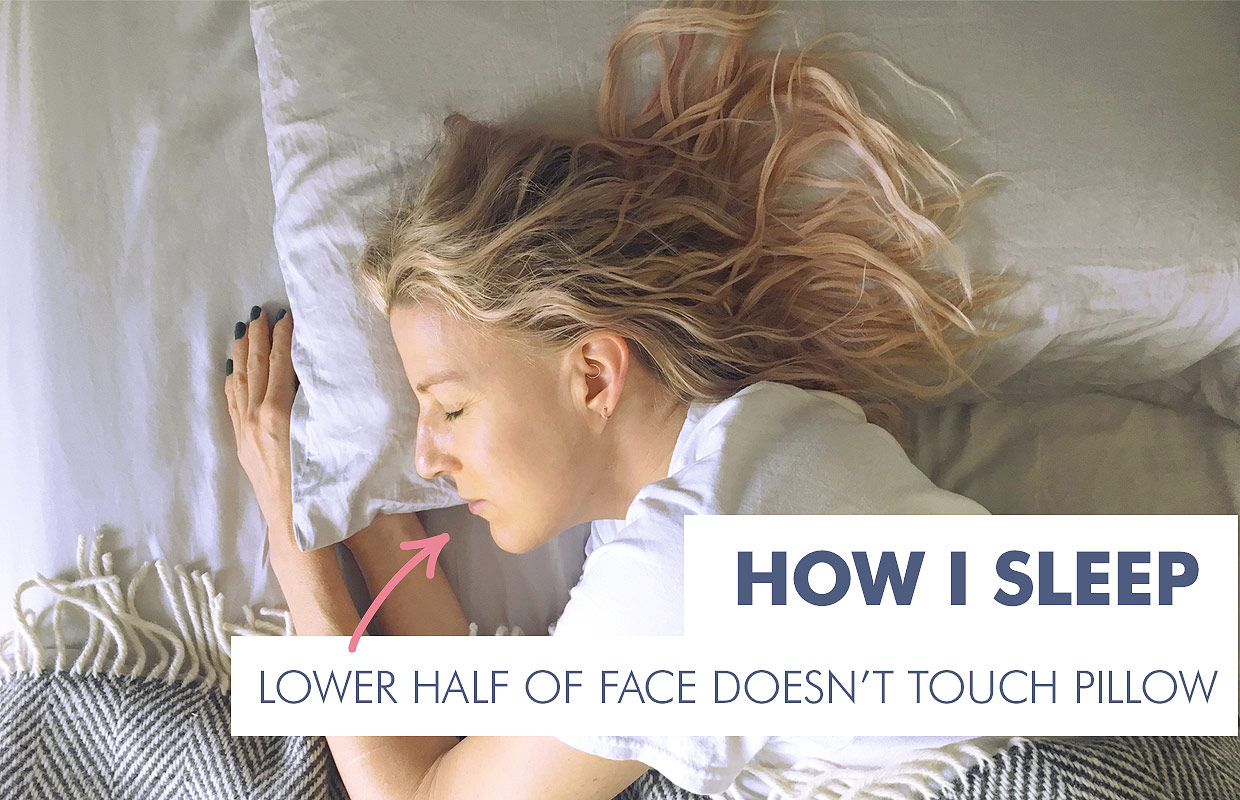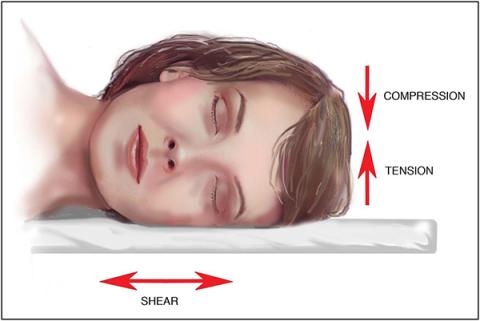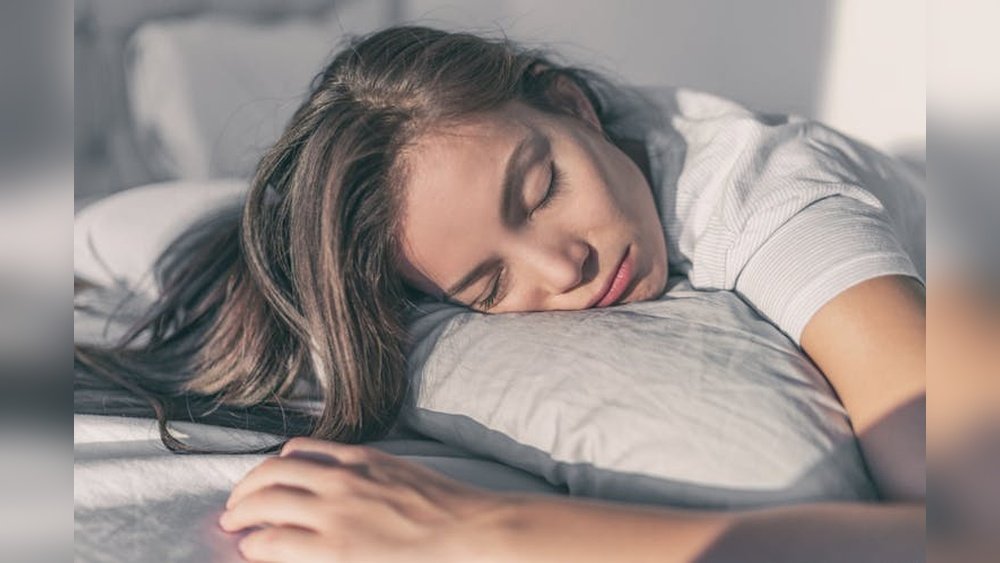Have you ever noticed new lines appearing on your face that seem to deepen overnight? What if the way you sleep is silently shaping those wrinkles?
Your sleep position might be playing a bigger role in wrinkle formation than you realize. When your face presses against a pillow night after night, it can cause “sleep wrinkles” that may become permanent over time. But don’t worry—understanding how your sleep habits affect your skin is the first step to keeping your face smooth and youthful.
You’ll discover the surprising connection between sleep positions and wrinkle formation, plus simple changes you can make tonight to protect your skin while you rest. Ready to wake up looking refreshed and wrinkle-free? Let’s dive in.
Sleep Positions And Skin Impact
Sleep positions affect your skin more than you might think. How you rest can change the way your skin folds and creases. This can lead to wrinkles over time. The pressure from your face pressing against the pillow plays a big role. Choosing the right sleep position helps protect your skin’s smoothness and youth.
Understanding the impact of different sleep postures can guide you to better skin care habits. Each position has unique effects on your face and skin health. Below, explore how back sleeping, side sleeping, and stomach sleeping influence wrinkle formation.
Back Sleeping Benefits
Sleeping on your back keeps your face free from pillow pressure. This reduces skin folding and creasing that cause wrinkles. The skin stays smooth and stretched in this position. Back sleeping also helps prevent fluid buildup around the eyes, reducing puffiness.
Without constant contact with the pillow, skin can breathe and repair overnight. This position supports natural skin renewal and slows wrinkle development. Using a soft, supportive pillow under your neck enhances these benefits. Back sleeping is the best choice for preserving youthful skin.
Side And Stomach Effects
Side and stomach sleeping press your face against the pillow. This constant pressure causes skin to fold and crease. Over time, these folds can turn into permanent wrinkles. The skin also loses elasticity faster in these positions.
Side sleeping may cause one side of the face to age faster. Stomach sleeping adds pressure to the entire front of your face. Both positions increase friction between skin and pillow, which damages skin cells. Using silk pillowcases can reduce some friction but does not stop all wrinkle formation.

Credit: blog.reneerouleau.com
How Wrinkles Form During Sleep
Wrinkles can develop while you sleep due to how your skin reacts to pressure and movement. During sleep, your face may press against the pillow, causing the skin to compress and fold. This repeated action can create lines that become more noticeable over time. Understanding how these wrinkles form can help you make better choices for your skin health.
Skin Compression And Folding
Sleeping positions that press your face into the pillow cause skin compression. This pressure folds the skin, especially around the cheeks, chin, and forehead. Over time, these folds can lead to permanent wrinkles. The skin loses elasticity as you age, making it harder to bounce back from the folds. Consistent pressure in the same areas speeds up wrinkle formation.
Friction From Pillowcases
Pillowcases can rub against your skin during sleep. This friction pulls and stretches the delicate facial skin. Rough fabrics like cotton increase this effect, causing irritation and small skin damage. Soft materials such as silk or satin create less friction, protecting the skin’s surface. Reducing friction helps prevent the breakdown of collagen, a key protein that keeps skin firm and smooth.
Preventing Wrinkles While Sleeping
Preventing wrinkles while sleeping involves simple changes that protect your skin. The way you position your face at night affects wrinkle formation. Pressure and friction from your pillow can cause lines and creases over time. Adjusting your sleep environment helps reduce skin damage. Small steps lead to smoother, healthier skin.
Choosing The Right Pillow And Pillowcase
Select pillows that support your head without pressing on your face. Memory foam or contour pillows keep your skin from folding deeply. Avoid firm pillows that push your cheeks against the surface. Use pillowcases made from silk or satin fabrics. These materials reduce friction and prevent skin stretching. Cotton pillowcases can cause more rubbing and dryness. Changing to smoother fabrics helps your skin glide gently as you sleep.
Adjusting Sleep Habits
Try to sleep on your back to avoid face compression. Side and stomach sleeping create pressure that forms wrinkles. Keep your head elevated slightly with a soft pillow. This reduces fluid buildup that can make skin puffier and crease more. Avoid twisting or burying your face into the pillow. Gentle movements and relaxed muscles protect skin elasticity. Consistent sleep positions guard against deep lines over time.
:max_bytes(150000):strip_icc()/gettyimages-606353439_0-2000-eb4add008f234f8d91782eed3b35a6c2.jpg)
Credit: www.health.com
Skincare For Sleep Wrinkle Care
Taking care of your skin during sleep helps reduce wrinkles caused by pressure and friction. Nighttime skincare focuses on hydration and skin repair. Using the right products can improve skin elasticity and softness. This care supports skin recovery from daily damage. Simple steps protect skin from forming new sleep lines. Consistent skincare habits boost your skin’s overall health.
Nighttime Products To Use
Choose creams with retinol to boost collagen production. Hyaluronic acid moisturizes skin deeply, keeping it plump. Peptides help repair damaged skin cells overnight. Use gentle cleansers to avoid stripping natural oils. Avoid heavy creams that can clog pores. Apply products in a thin, even layer for best absorption. Night serums with antioxidants fight free radicals. These products work while you sleep, renewing skin.
Sun Protection And Its Role
Sun damage worsens wrinkles and skin aging. Use sunscreen every day, even if indoors. UV rays break down collagen and elastin fibers. Protecting skin keeps wrinkles from deepening. Choose broad-spectrum sunscreens with at least SPF 30. Reapply sunscreen after sweating or washing your face. Hats and sunglasses provide extra protection outdoors. Combining sun care with nighttime skincare prevents premature aging.
Professional Treatments For Sleep Wrinkles
Professional treatments target sleep wrinkles with effective, visible results. They help smooth lines caused by skin folding during sleep. These options work well for wrinkles that do not improve with home care. Many treatments stimulate collagen or relax muscles to reduce wrinkle depth.
Choosing the right treatment depends on wrinkle type and skin condition. A skincare professional can recommend the best solution after examining your skin. Treatments range from quick injections to skin resurfacing techniques. Here are two common professional approaches.
Fillers And Botox
Dermal fillers restore volume lost with age. They fill in deep creases and provide a smoother skin surface. Fillers often use substances like hyaluronic acid, which is natural to the skin. Results appear quickly and last several months.
Botox relaxes facial muscles that cause wrinkles. It stops repeated muscle movement that forms lines over time. Botox is especially useful for wrinkles near the eyes and forehead. Treatments take minutes and effects last about three to six months.
Laser And Microneedling Options
Laser treatments remove damaged skin layers and boost collagen production. This process tightens skin and reduces wrinkle visibility. Different lasers target various skin depths, making treatments customizable.
Microneedling uses tiny needles to create micro-injuries. This triggers the skin’s repair system and collagen growth. Microneedling improves texture, firmness, and reduces fine lines. It is often combined with serums for enhanced results.

Credit: www.theaestheticsociety.org
Frequently Asked Questions
Does Sleep Position Cause Wrinkles?
Sleeping positions that press your face against pillows can cause sleep wrinkles over time. Back sleeping reduces this risk. Using silk pillowcases and skincare products helps protect skin. Though sleep position influences wrinkles, genetics and sun exposure play larger roles in wrinkle formation.
What Is The Best Sleeping Position To Prevent Aging?
Sleeping on your back best prevents aging by reducing facial compression and sleep wrinkles. Use silk pillowcases to minimize skin friction. Apply night creams with retinol and hyaluronic acid to repair and hydrate skin overnight. This routine supports smoother, younger-looking skin.
Are Sleep Wrinkles Reversible?
Yes, sleep wrinkles can be reversible, especially if treated early. Use silk pillowcases, change sleep positions, and apply retinol or hyaluronic acid. Professional treatments like fillers, laser resurfacing, or chemical peels also help restore skin smoothness and reduce wrinkles effectively.
Why Am I Suddenly Getting More Wrinkles?
Sudden wrinkles often result from aging, sun damage, dehydration, and repeated facial movements. Poor sleep position and skin friction can also contribute. Using silk pillowcases, hydrating skincare, and sun protection helps reduce them.
Can Sleeping Position Cause Wrinkles On The Face?
Sleeping with your face pressed against a pillow can cause skin folds, leading to wrinkles over time.
Which Sleep Position Helps Prevent Facial Wrinkles?
Sleeping on your back reduces skin compression, lowering the chance of wrinkle formation.
Conclusion
Sleep position can influence wrinkle formation over time. Sleeping on your back reduces skin compression and creasing. Using silk pillowcases lowers friction and protects delicate skin. Nighttime skincare with retinol and hyaluronic acid supports skin repair. Protecting skin from sun damage also helps prevent wrinkles.
Small changes in habits can improve skin’s appearance. Consistency matters most for lasting results. Consider professional treatments for deeper, persistent wrinkles. Healthy sleep and care routines promote youthful skin naturally.
 Skip to content
Skip to content 